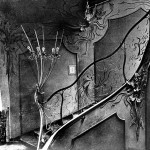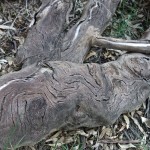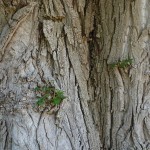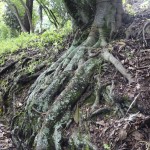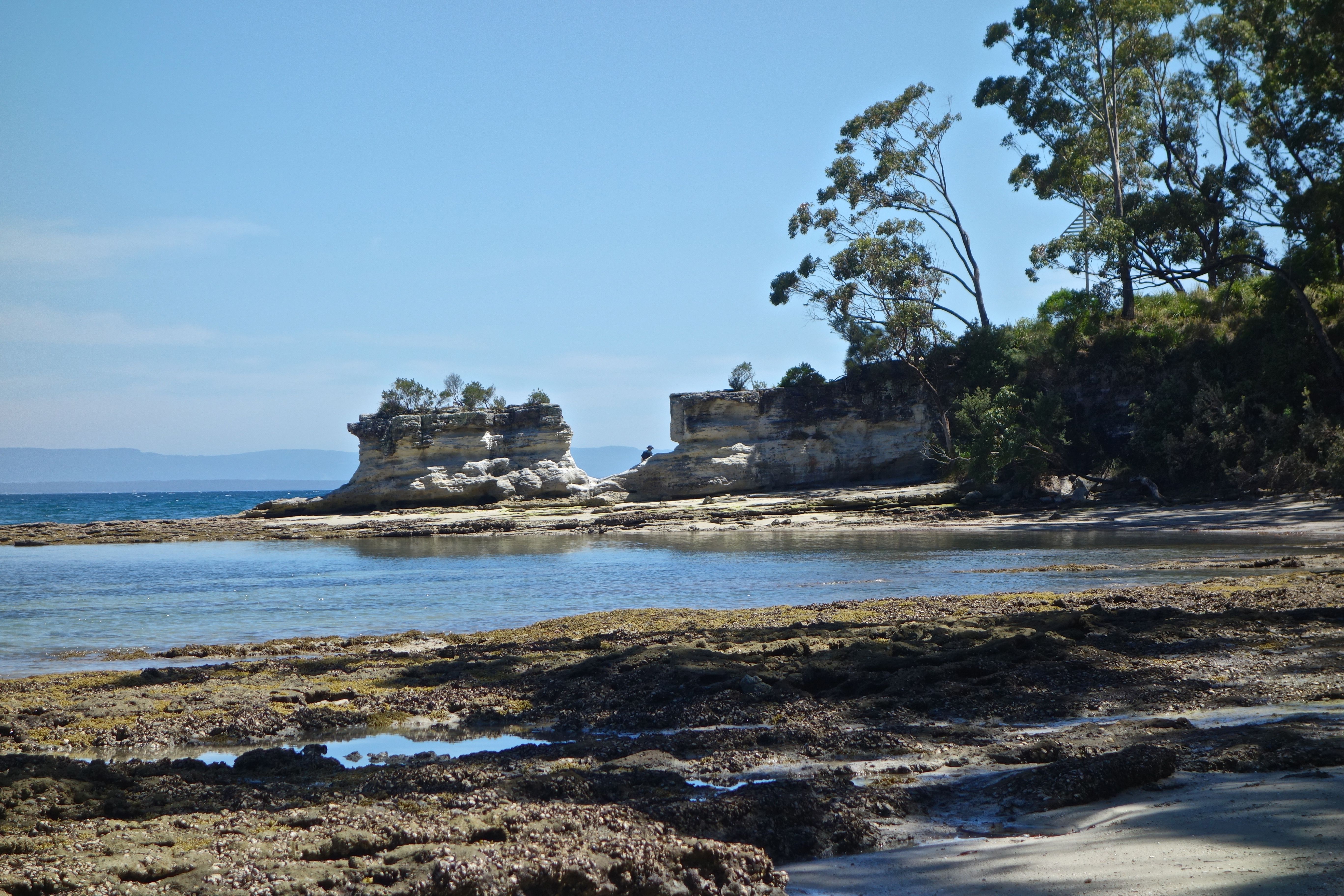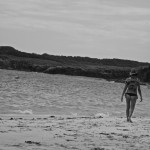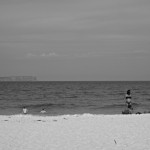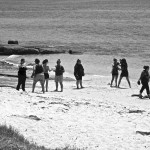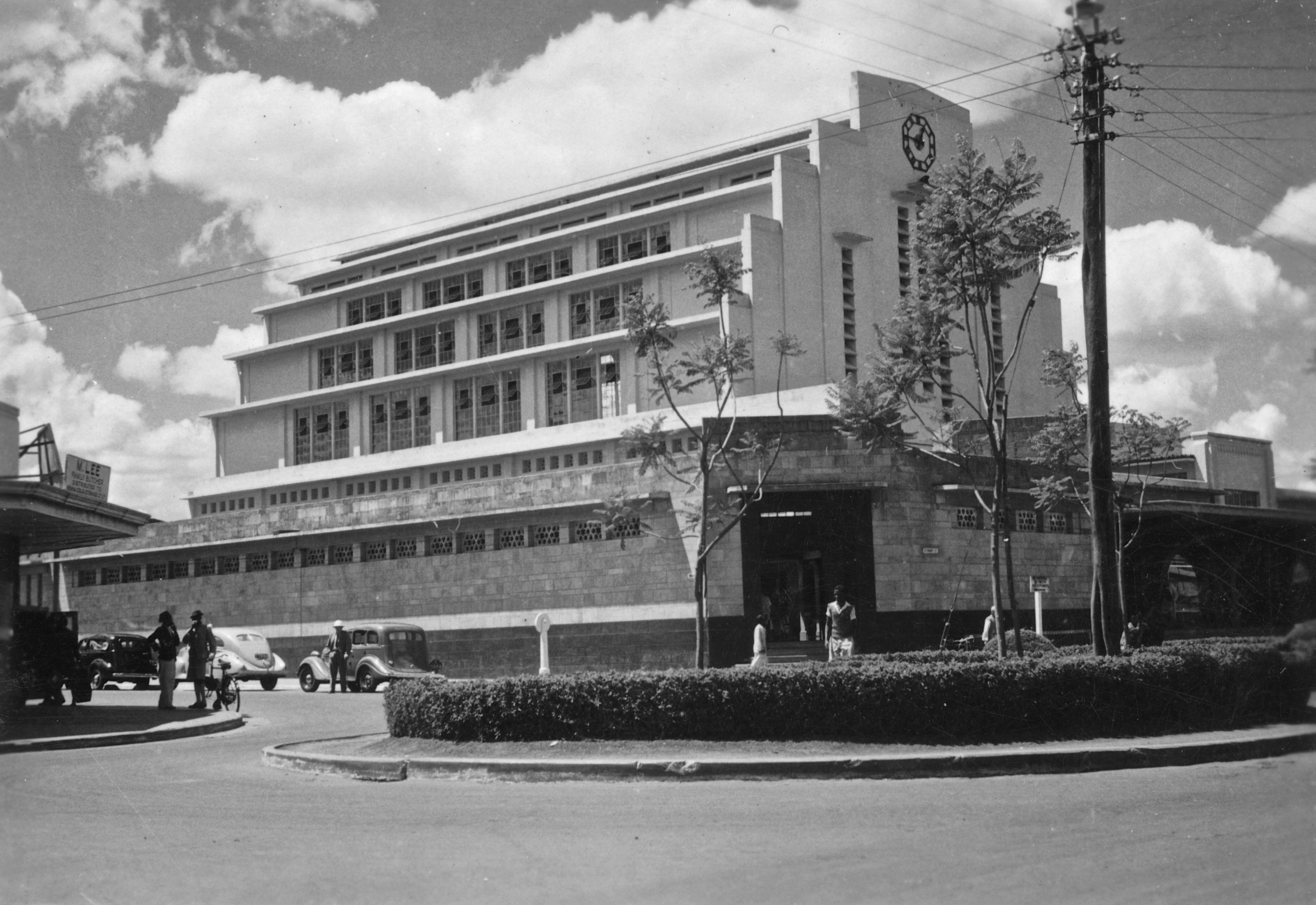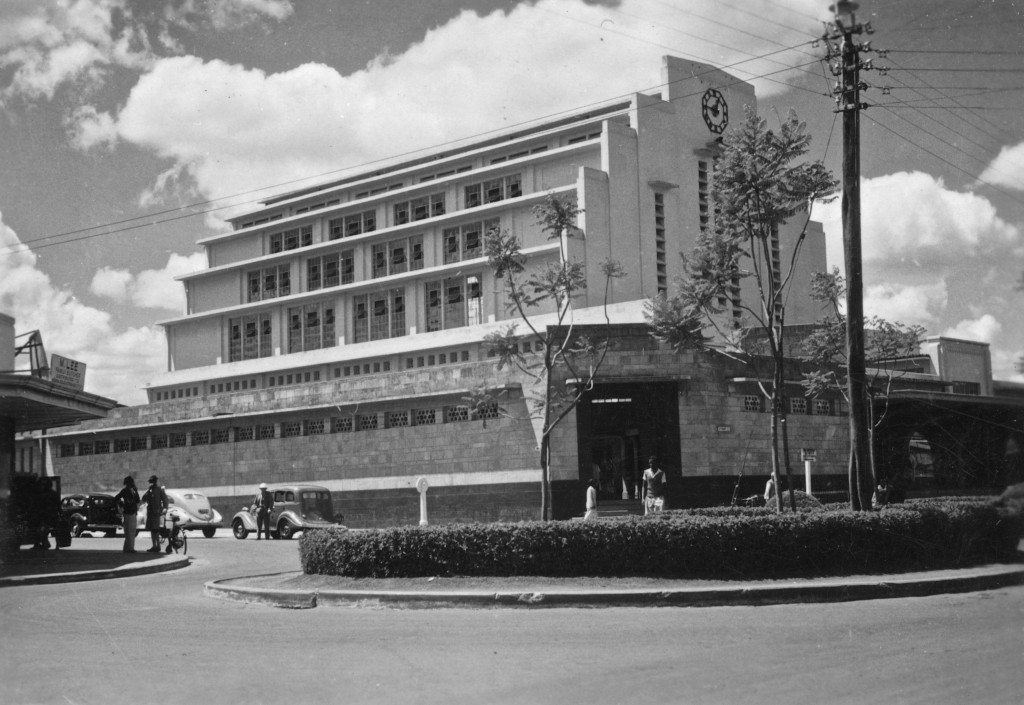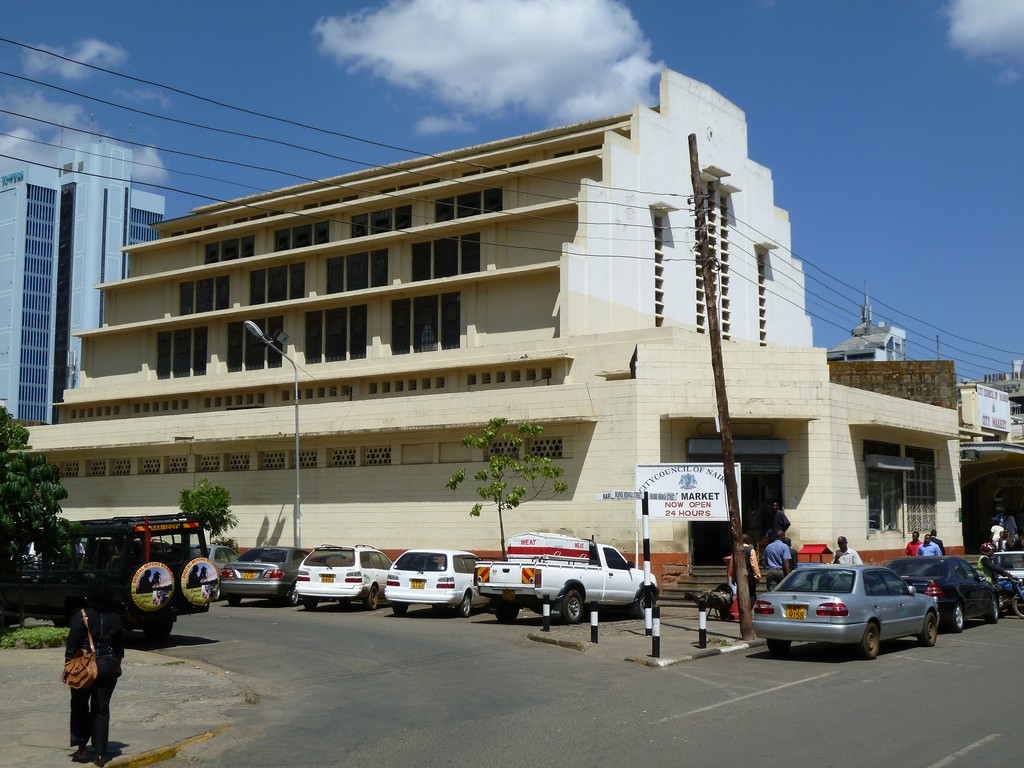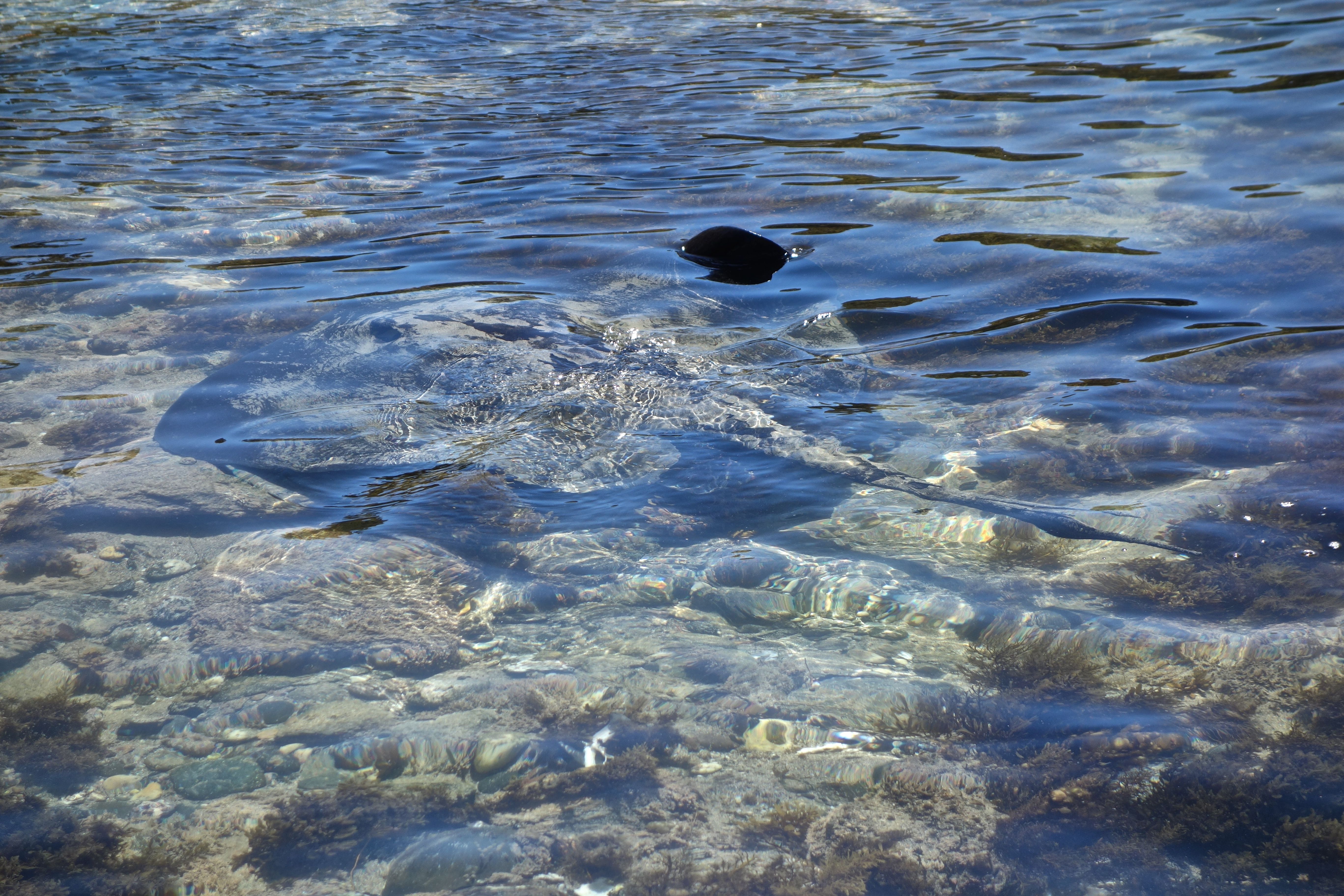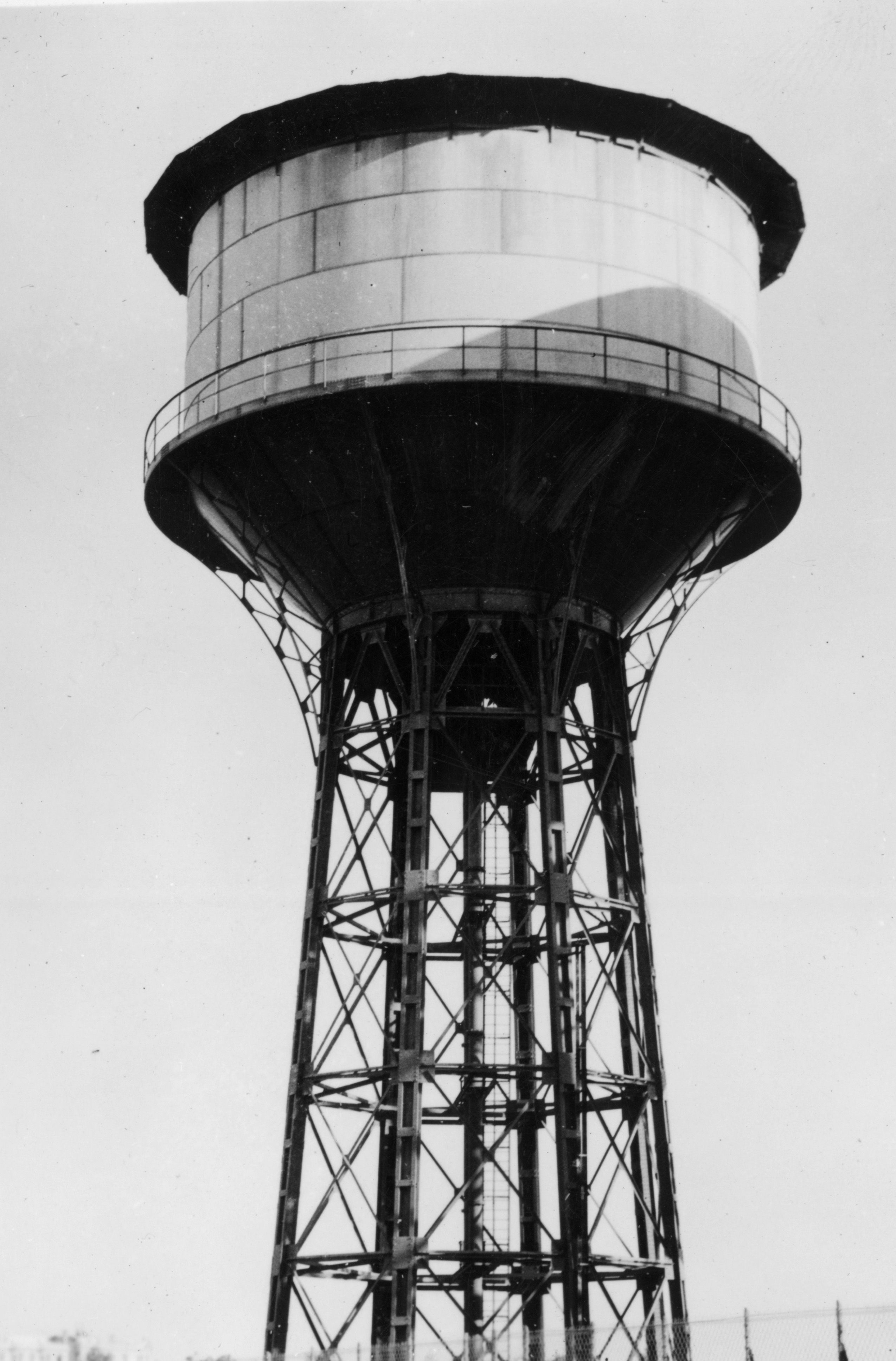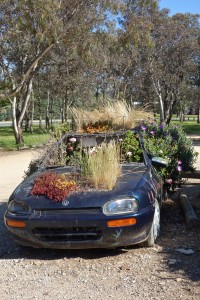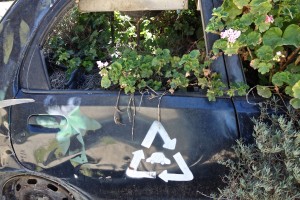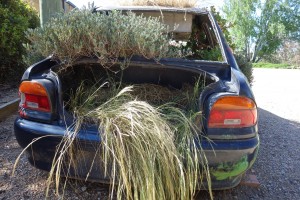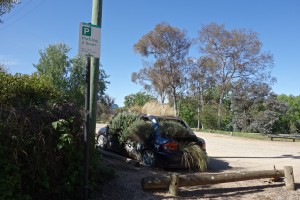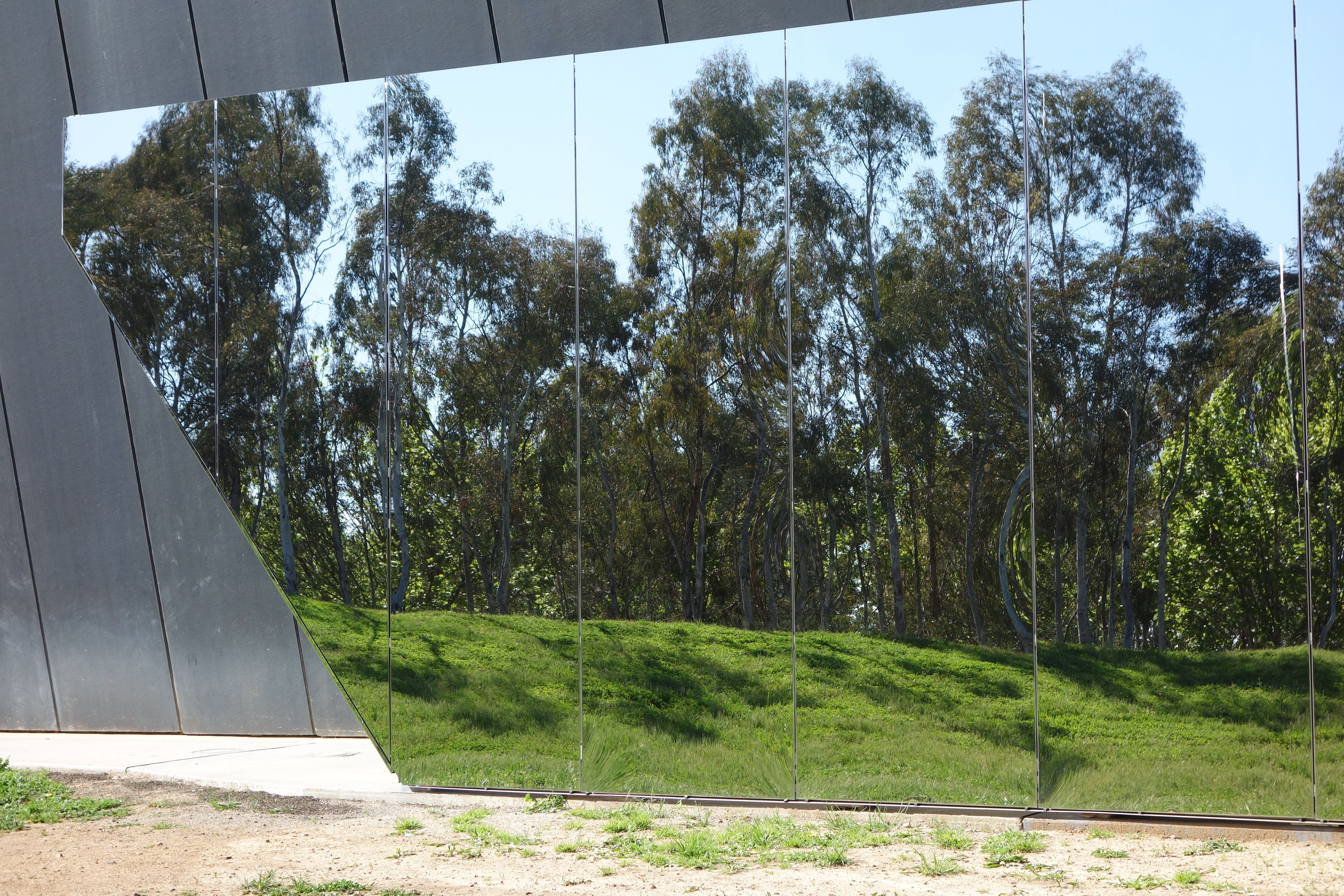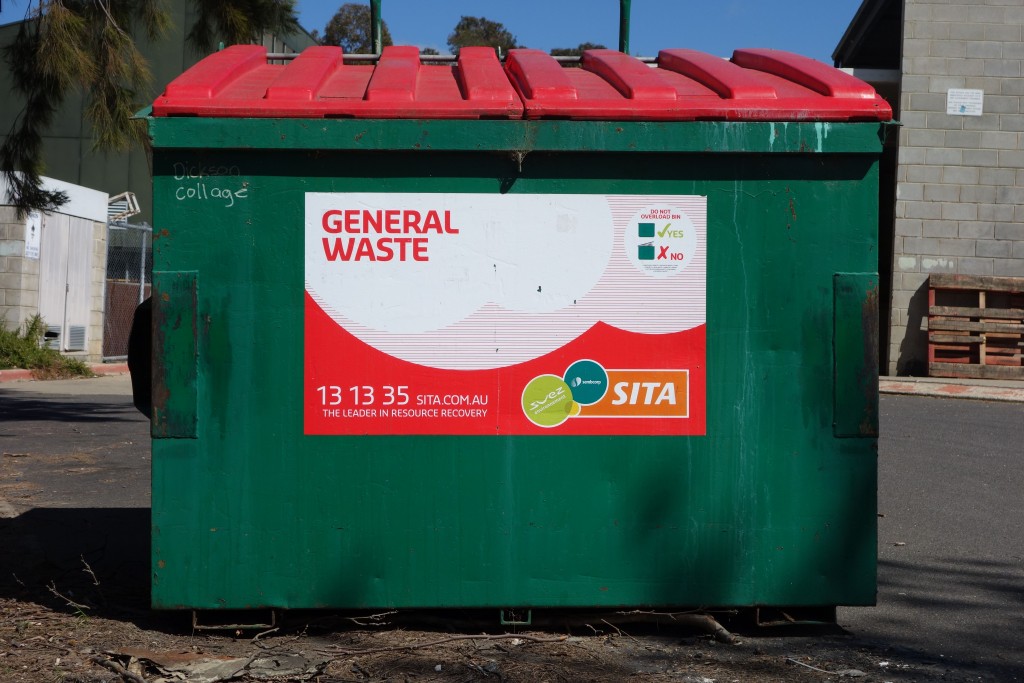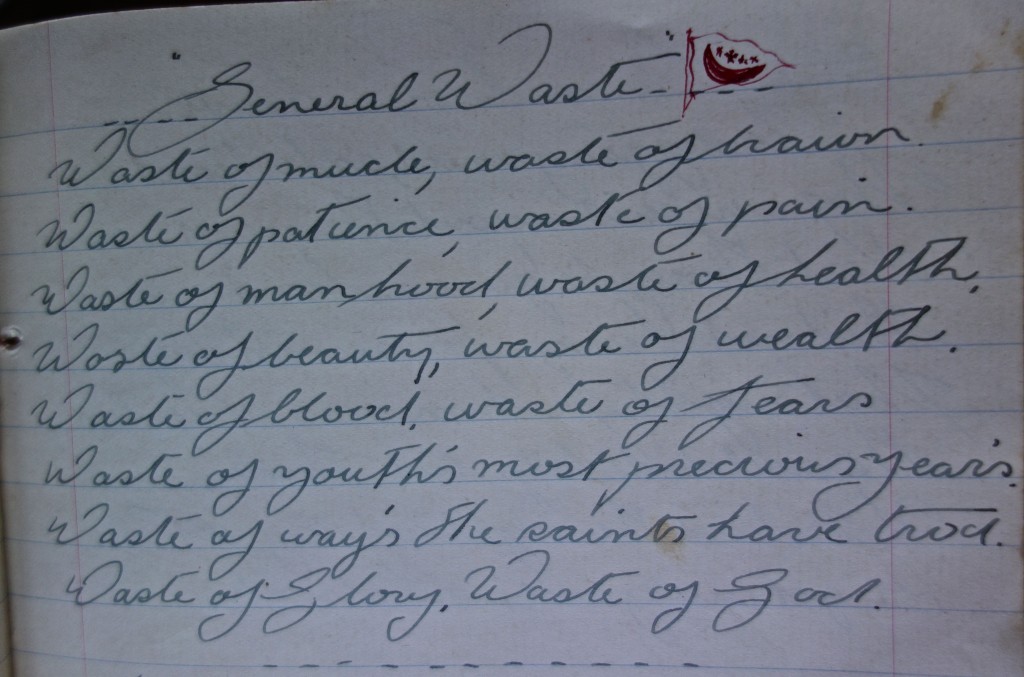We escaped to the beach on New Year’s Day (yesterday). I’ve spent every New Year of my life in Australia, and take the summer holiday mood for granted. But since I’ve been blogging I’ve seen countless photos of New Years from the other side of the world where it’s snowing and the trees are bare and people are indoors in front of a warming device.
As I sat on the beach watching holidaymakers do what relaxes them, I was struck by the difference in the world’s seasons.

On most New Year’s Days, good-weather days in the fullness of an Australian summer, there’ll be families and friends playing beach cricket (or football or volleyball…). Rubbish bins are the wickets, the bat and ball are bright plastic, easy to see against a sandy background.

Dogs on this beach are allowed off-leash. There were three running free, in and out of the water and in and out of the cricket game. The one standing in the shallow surf here, a hyperactive apricot poodle, tore up and down the beach and even ran right across the back of my legs as I lay peacefully reading Chekhov on the sand.

A few people messed about in kayaks, rowing out to the deeper water and back again, then putting them away beneath the trees.

But not everyone was having a good holiday. Someone on this beach had a disappointing Christmas-New Year and wrote about it in a five-page letter, stabbed it onto a sharp broken branch from where it worked its way loose and drifted down to the urine-soaked sand beneath this rocky overhang at the far end of the beach. I read the five pages, recognised the pain of unrequited love, and scattered them again beneath the tree. Together, he said, they had come this far, but she had kept moving and left him behind.
Would she one day (before the next high tide) stroll past this overhang, see his writing, and change her mind?

When we were weary of the beach, when we’d walked far across the rocks, far from cricketers and mad dogs, examined every rock pool and cooled our ankles in the clear water of several two-metre wide beaches formed between rocky outcrops, we went hunting for food. Long lines emerged from the popular fish and chip shops. But there was another choice; a longer walk brought us to a small restaurant, Blank Canvas, where for a couple of hours we sat at a table, enjoying fish and chips and this view between two gnarly trees.
A good start to the year.
*****

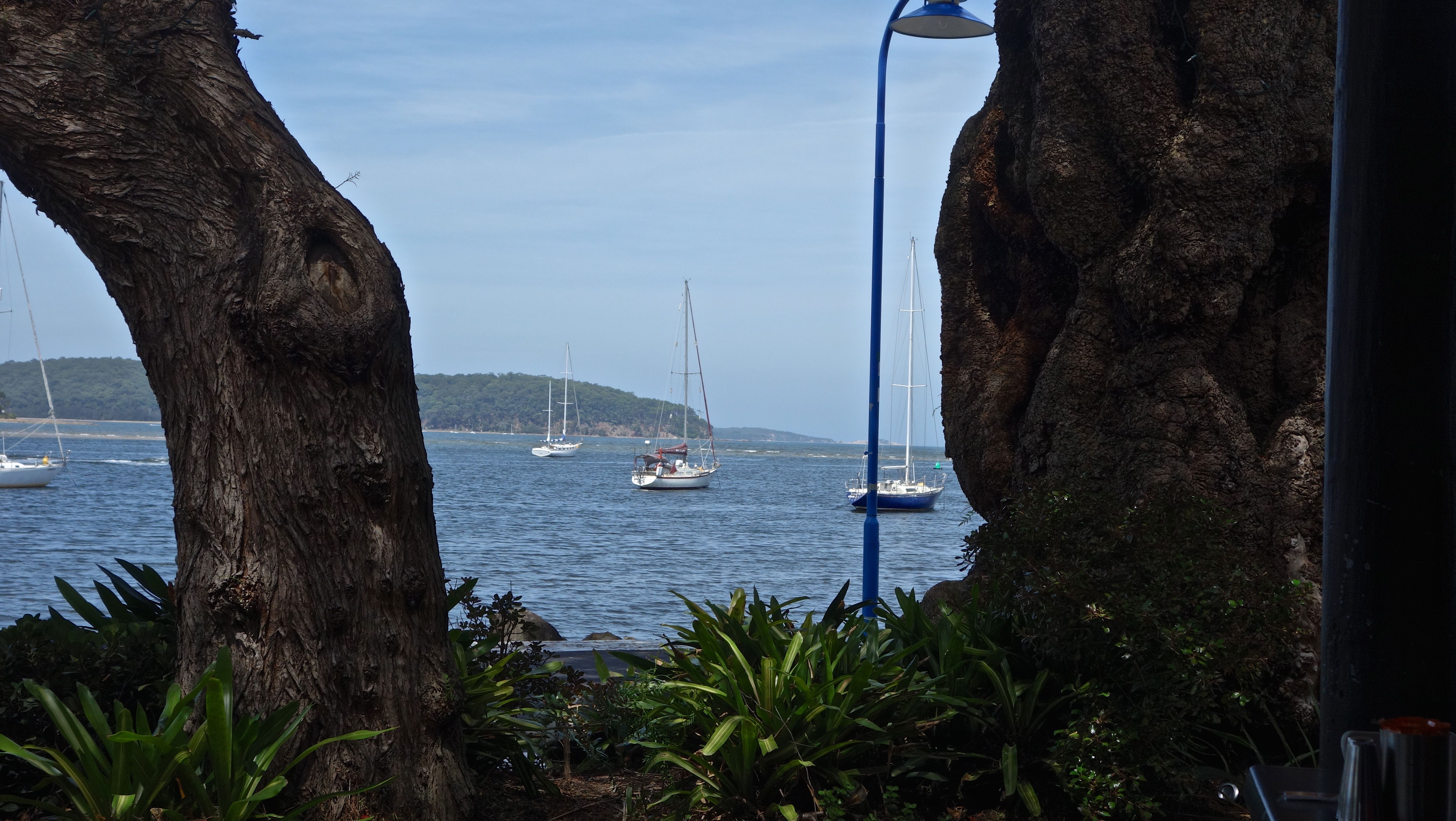
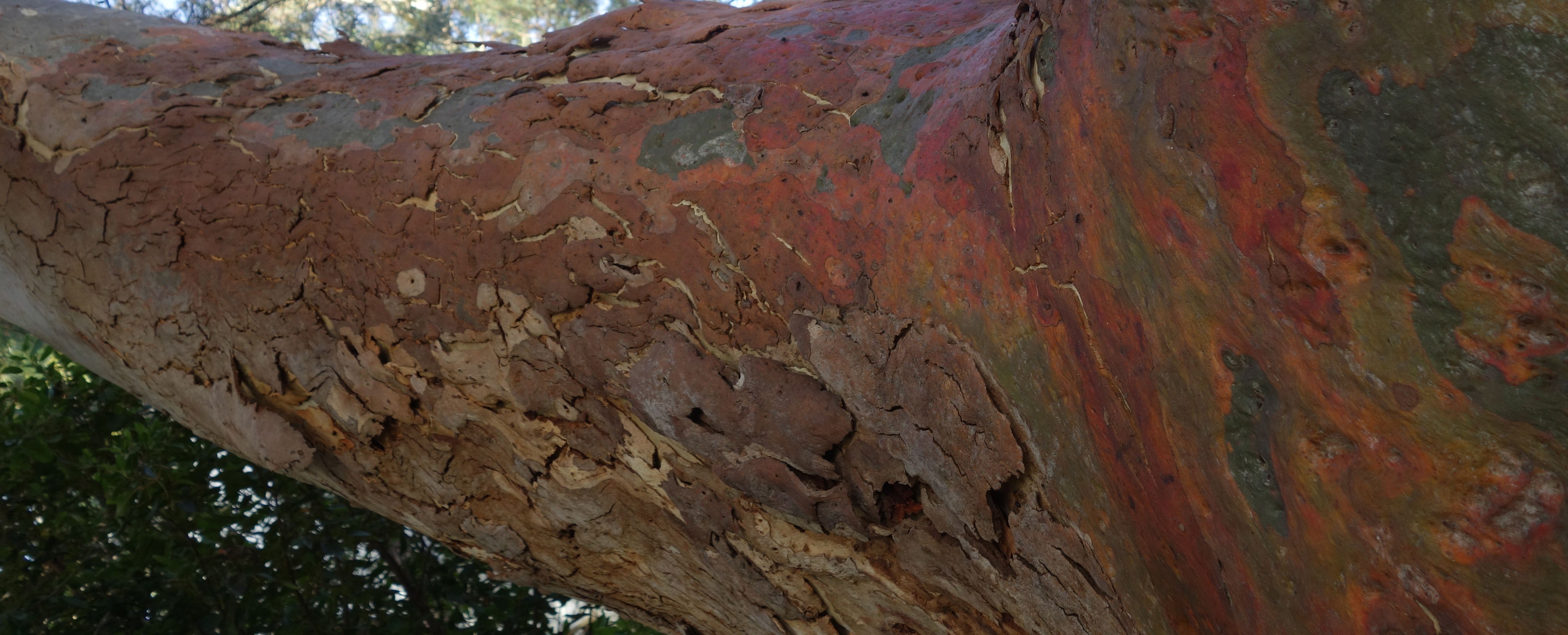


 bright green,
bright green,

